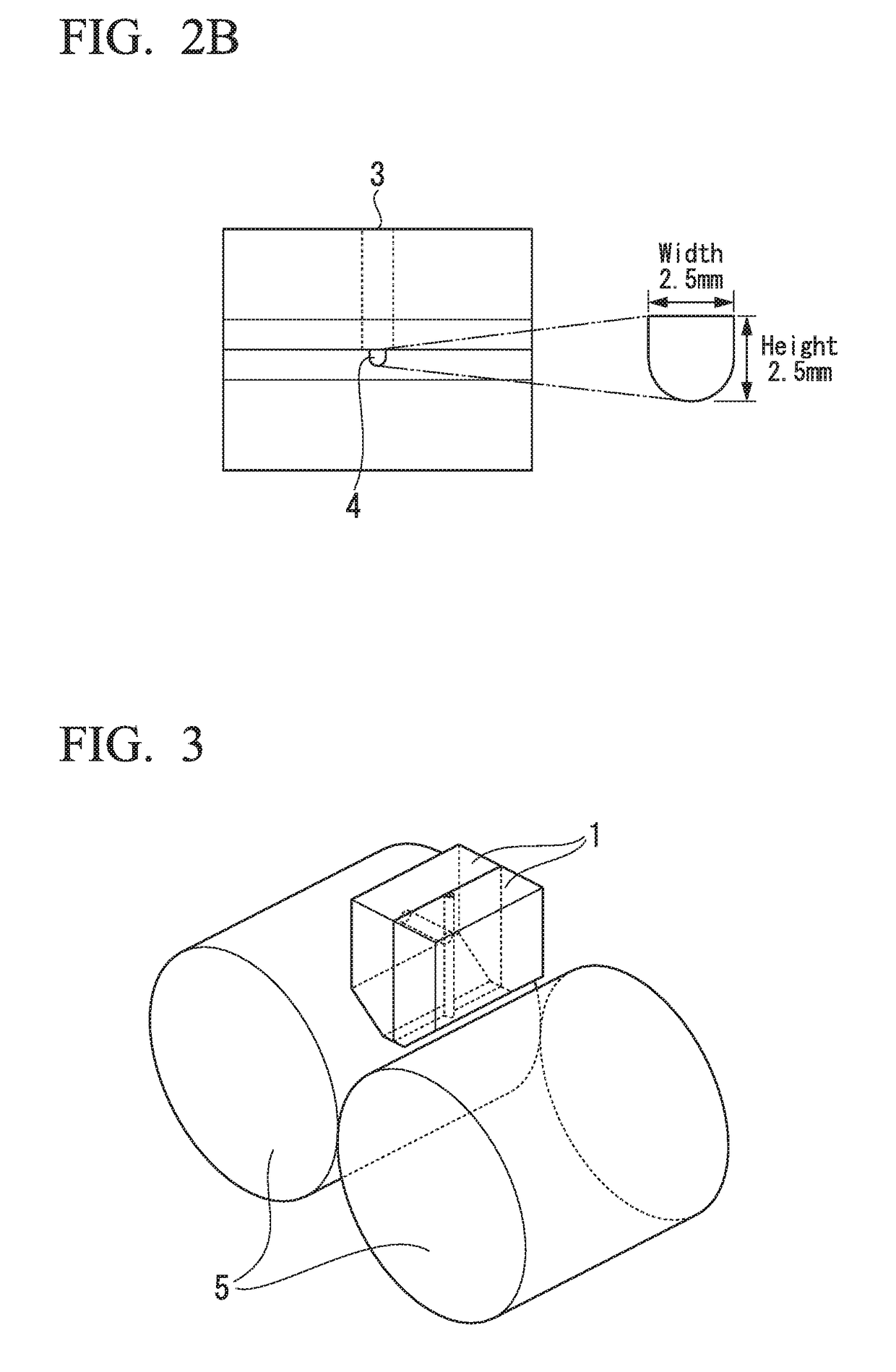Production method for fiber-reinforced thermoplastic resin composite material, production method for fiber-reinforced thermoplastic resin tape, production method for press-molding material, production method for molded article, unidirectional prepreg, and molded article
a thermoplastic resin and composite material technology, applied in the direction of coatings, etc., can solve the problems of high production cost, high production cost, and high cost, and achieve the effects of improving productivity, reducing shear stress, and increasing line speed
- Summary
- Abstract
- Description
- Claims
- Application Information
AI Technical Summary
Benefits of technology
Problems solved by technology
Method used
Image
Examples
example 1
[0138]The nylon resin (A-1) was supplied to a 30φ twin screw extruder at a rate of 0.83 kg / h by using a metering feeder, plasticized at 250° C., supplied to a vertical wire coating die set at 280° C., and composited with the carbon fiber (B). The die outlet (outlet opening 4) has a height of 2.5 mm and a width of 2.5 mm, and the die is one for one having a shape in which a semicircle having a height of 1.25 mm, a width of 2.5 mm, and a diameter of 2.5 mm and a rectangle having a height of 1.25 mm and a width of 2.5 mm are combined in the height direction.
[0139]The composite strand was allowed to pass between the two metal pressure rolls 5 which had a diameter of 100 mm and in which water at 30° C. was circulated to be crushed. The pressurizing force of the pressure roll 5 was adjusted to 31 kgf. The pressure roll was installed immediately below the die outlet (outlet opening), and the position thereof was adjusted so that upper 40 mm of the center of the two pressure rolls became th...
example 2
[0141]Example 2 was carried out in the same manner as in Example 1 except that the pressurizing force was adjusted to 5 kgf. The thickness of the tape thus obtained was 0.4 mm, the fiber was expanded in the width direction in the tape, and the surface thereof was covered with the resin.
example 3
[0142]Example 3 was carried out in the same manner as in Example 1 except that the quantity of the nylon resin supplied was set to 2.23 kg / h. The ratio of carbon fiber calculated from the charged quantity is 35%. The thickness of the tape thus obtained was 0.2 mm, the fiber was expanded in the width direction in the tape, and the surface thereof was covered with the resin.
PUM
| Property | Measurement | Unit |
|---|---|---|
| height | aaaaa | aaaaa |
| thickness | aaaaa | aaaaa |
| thickness | aaaaa | aaaaa |
Abstract
Description
Claims
Application Information
 Login to View More
Login to View More - R&D
- Intellectual Property
- Life Sciences
- Materials
- Tech Scout
- Unparalleled Data Quality
- Higher Quality Content
- 60% Fewer Hallucinations
Browse by: Latest US Patents, China's latest patents, Technical Efficacy Thesaurus, Application Domain, Technology Topic, Popular Technical Reports.
© 2025 PatSnap. All rights reserved.Legal|Privacy policy|Modern Slavery Act Transparency Statement|Sitemap|About US| Contact US: help@patsnap.com



